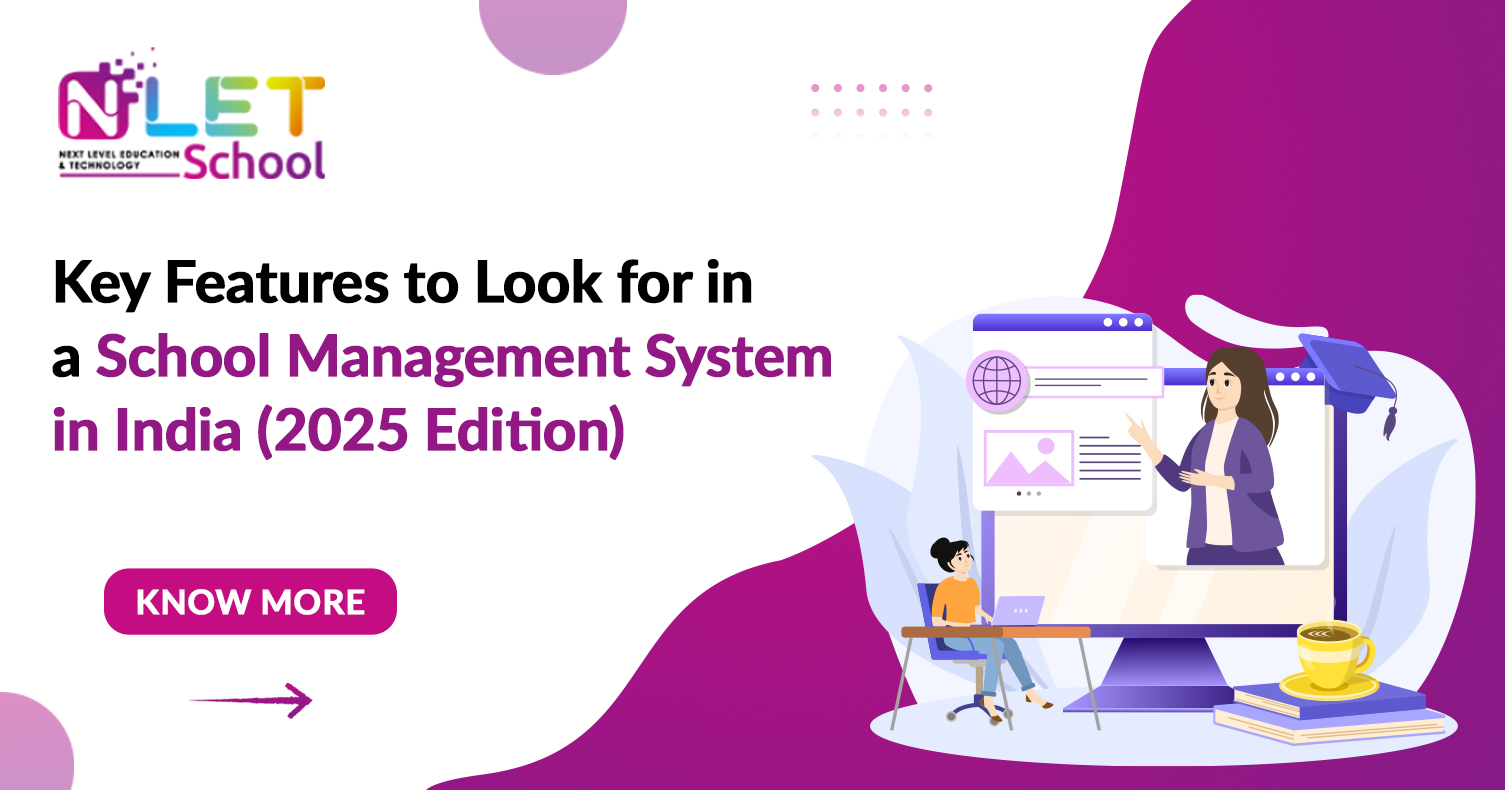Revolutionizes Your Schools Efficiency with the Ultimate School Management System
Is your school struggling to keep up with administrative tasks, leading to inefficiencies and decreased productivity? It's time to revolutionize your school's efficiency with the ultimate school management system . This comprehensive software solution is designed to streamline and automate all aspects of school administration, from student enrollment and attendance tracking to grading and reporting.
With the ultimate school management system, you can bid farewell to manual paperwork and endless spreadsheets. This powerful tool will ensure that your school runs like a well-oiled machine, freeing up valuable time and resources for teachers and administrators to focus on what truly matters – educating and nurturing students.
The ultimate school management system offers a wide range of features, including secure student profiles, integrated communication channels, customizable reports, and real-time analytics. It can be accessed from anywhere, anytime, making it convenient for both staff and parents.
Say goodbye to the days of lost records, missed deadlines, and communication breakdowns. Embrace the power of technology to revolutionize your school's efficiency and unlock its full potential. Invest in the ultimate school management system and see the positive impact it has on your school's operations and academics.
Benefits of using a school management system
Implementing a school management system in your institution offers numerous benefits. Firstly, it eliminates the need for manual paperwork and reduces the chances of errors. With automated processes for enrollment, attendance, and grading, you can say goodbye to misplaced records and hours spent on data entry. This not only saves time but also increases accuracy, ensuring that all information is up-to-date and easily accessible.
Secondly, a school management system enhances communication between teachers, parents, and administrators. Integrated communication channels allow for seamless interaction, enabling parents to stay informed about their child's progress, upcoming events, and important announcements. Teachers can easily send messages, share documents, and communicate with parents individually or in groups. This improves parent-teacher collaboration and ensures that everyone is on the same page.
Another significant benefit of a school management system is the ability to generate customizable reports and analytics. With just a few clicks, you can access comprehensive reports on student performance, attendance trends, and class averages. These reports provide valuable insights that can guide decision-making, identify areas for improvement, and track progress towards academic goals. Real-time analytics also enable timely interventions to support struggling students and recognize high achievers.
Features of an efficient school management system
The ultimate school management system is equipped with a wide range of features to enhance efficiency and streamline operations. One of the key features is secure student profiles. Each student has a dedicated profile that contains all relevant information, including personal details, academic records, attendance history, and communication logs. This centralized database eliminates the need for multiple files and ensures that information is easily accessible and secure.
Another important feature is the integrated communication channels. The system provides various communication tools, such as instant messaging, email, and notifications, allowing teachers, parents, and administrators to stay connected. Announcements, reminders, and updates can be sent to specific individuals or groups, ensuring that important information reaches the intended recipients in a timely manner. This fosters effective communication and collaboration, leading to a stronger school community.
Customizable reports and analytics are also essential features of an efficient school management system. Administrators can generate reports on various aspects of school operations, such as enrollment trends, staff performance, and financial data. These reports can be tailored to specific needs and can be automatically generated on a regular basis. Real-time analytics provide valuable insights into student performance, attendance patterns, and other key metrics, enabling proactive decision-making and targeted interventions.
Implementing a school management system in your institution
Implementing a school management system requires careful planning and execution. The first step is to assess your school's needs and objectives. Identify the specific challenges you want to address and determine the goals you want to achieve with the system. This will help you choose the right software solution that aligns with your school's requirements.
Once you have selected a school management system, it is important to involve all stakeholders in the implementation process. This includes administrators, teachers, support staff, and parents. Conduct training sessions to familiarize everyone with the system's features and functionalities. Provide ongoing support and assistance to address any concerns or difficulties that may arise during the transition period.
Data migration is another crucial aspect of implementing a school management system. Ensure that all existing data, such as student records, attendance logs, and academic information, is accurately transferred to the new system. Test the system thoroughly to ensure that all data is intact and accessible.
Choosing the right school management system for your school
Choosing the right school management system is a critical decision that can greatly impact your school's efficiency and productivity. Consider the following factors when selecting a system:
- Scalability: Ensure that the system can accommodate your school's current needs and future growth. It should be able to handle increasing student enrollment, additional features, and expanding functionalities.
- User-friendly interface: The system should be intuitive and easy to navigate for both administrators and end-users. A complex and confusing interface can hinder adoption and decrease efficiency.
- Integration capabilities: Look for a system that can integrate with other educational technologies used in your school, such as learning management systems (LMS) or online assessment tools. This allows for seamless data transfer and enhances overall functionality.
- Security and data privacy: Ensure that the system has robust security measures in place to protect sensitive data. It should comply with data privacy regulations and provide options for data backup and recovery.
- Vendor reputation and support: Research the vendor's reputation in the market and read reviews from other schools that have implemented the system. Consider the vendor's customer support and availability of training resources.
By considering these factors, you can choose a school management system that meets your school's unique requirements and maximizes its potential.
Training and support for school management system implementation
Proper training and ongoing support are crucial for a successful school management system implementation. Training sessions should be conducted for all stakeholders, including administrators, teachers, and support staff. These sessions should cover the system's features, functionalities, and best practices for efficient usage.
Training can be conducted through workshops, webinars, or online tutorials. Provide hands-on experience and real-life scenarios to ensure that users understand how to navigate the system and perform necessary tasks. Offer refresher courses or additional training sessions as needed, especially for new staff members or those who require further assistance.
In addition to training, ongoing support is essential to address any issues or concerns that may arise during system usage. Establish a support system that allows users to seek assistance, report problems, or provide feedback. This can be in the form of a dedicated helpdesk, online support portal, or email support. Regularly review user feedback to identify areas for improvement and ensure that the system continues to meet the evolving needs of your school.
Case studies of schools that have successfully implemented a school management system
Real-life examples can provide valuable insights into the benefits and impact of implementing a school management system. Let's take a look at two case studies of schools that have successfully revolutionized their efficiency with the ultimate school management system.
Case Study 1: ABC International School
ABC International School faced numerous challenges related to manual paperwork, communication breakdowns, and data management. The implementation of a school management system transformed their operations and improved overall efficiency. Teachers can now easily mark attendance, input grades, and generate reports. Parents have access to real-time updates on their child's progress and can communicate with teachers effectively. The system also streamlined administrative tasks, such as enrollment and fee management. ABC International School now operates more smoothly, with increased productivity and enhanced collaboration.
Case Study 2: XYZ High School
XYZ High School struggled with outdated processes and lack of centralized data management. They implemented a school management system that provided features such as secure student profiles, integrated communication channels, and customizable reports. This allowed the school to efficiently track attendance, monitor student performance, and communicate with parents. The system also facilitated data-driven decision-making, enabling XYZ High School to identify areas for improvement and implement targeted interventions. As a result, student engagement and academic outcomes improved significantly, and administrative tasks were streamlined.
These case studies illustrate how a school management system can transform a school's operations, enhance communication, and improve academic outcomes. By leveraging technology, schools can overcome administrative challenges and create an efficient and productive learning environment.
Best practices for optimizing the use of a school management system
To fully optimize the use of a school management system, consider the following best practices:
- Standardize processes: Establish consistent processes and procedures for data entry, attendance tracking, grading, and reporting. This ensures that all users follow the same guidelines and promotes accuracy and efficiency.
- Regularly update data: Encourage teachers and administrators to update student data regularly. This includes personal information, academic records, and contact details. Regularly review and maintain the integrity of the data to ensure its accuracy.
- Promote collaboration: Encourage collaboration among teachers, support staff, and administrators through the use of integrated communication channels. Foster a culture of teamwork and encourage the sharing of best practices and resources.
- Analyze data and reports: Regularly analyze the reports and analytics provided by the system. Identify trends, patterns, and areas for improvement. Use this data to drive decision-making and implement targeted interventions.
- Continuously train and support users: Provide ongoing training and support to ensure that users are maximizing the system's potential. Offer refresher courses, workshops, and access to support resources. Foster a culture of continuous learning and improvement.
By following these best practices, you can optimize the use of your school management system and reap the maximum benefits it offers.
Integrating a school management system with other educational technologies
Integrating a school management system with other educational technologies can further enhance its functionality and impact. Here are some key technologies that can be integrated with a school management system:
- Learning Management Systems (LMS): An LMS allows for the creation, delivery, and management of online courses and educational content. By integrating an LMS with a school management system, you can seamlessly transfer student data, track progress, and synchronize course details.
- Online Assessment Tools: Online assessment tools enable teachers to create and administer quizzes, tests, and assignments digitally. Integration with a school management system allows for automatic grading, performance tracking, and data analysis.
- Library Management Systems: A library management system automates library operations, such as cataloging, circulation, and inventory management. Integration with a school management system ensures that student data is synchronized, enabling efficient borrowing and tracking of library resources.
- Parent-Teacher Communication Apps: Parent-teacher communication apps provide a platform for easy and instant communication between parents and teachers. Integration with a school management system allows for seamless data transfer, ensuring that parents receive updates and notifications directly within the app.
By integrating these technologies, you can create a comprehensive ecosystem that enhances collaboration, communication, and overall efficiency within your school.
Conclusion: The future of school management systems
The future of school management systems is promising, with continuous advancements in technology and increasing adoption by educational institutions worldwide. As schools continue to recognize the need for streamlined operations and efficient administration, the demand for comprehensive school management systems will only grow.
The ultimate school management system offers a powerful solution to revolutionize your school's efficiency. By automating administrative tasks, enhancing communication, and providing valuable insights through data analytics, this system empowers schools to focus on what truly matters – educating and nurturing students.
Investing in the ultimate school management system is an investment in your school's future. Embrace the power of technology and unlock your school's full potential. Say goodbye to inefficiencies and hello to a well-oiled machine that runs smoothly, leaving more time for teachers to teach and students to learn. Revolutionize your school's efficiency with the ultimate school management system and embark on a journey towards excellence.





